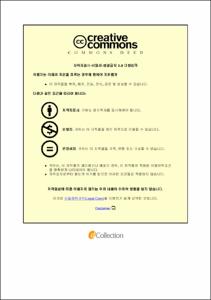Ulsan Univ. Repository
Thesis
General Graduate School
Mechanical & Automotive Engineering
1. Theses (Master)
SCALE EFFECTS OF SOLID-GAS INTERACTION ON GAS PRESSURE IN NANOCHANNEL
- Abstract
- A large number of micro-devices involving fluid flow in microstructures have been designed and produced in the late 1980s. As the microscale and nanoscale electromechanical systems (MEMS and NEMS), energy direct conversion technology, microfluidics and nanofluids, quantum structures and components, electronics, photonics and optoelectronics, molecular sensing and biomedical diagnosis of nano-materials as well as the development of scanning probe microscopy techniques to explore energy in micro-/nano scale transport mechanism is also becoming increasingly important. Understanding the energy transfer mechanism of micro-/nano-scale is significant for development of nanotechnology. When the characteristic length can be compared to the length of the mechanical, the continuity hypothesis in traditional thermal analysis may be broken. However, even in such cases, the continuum description breaks down on the nano-material interfaces. Therefore, we present the result of our investigations using Molecular Dynamics (MD) simulations with continuum equations, analyze the feasibility of the simulation results and check the validity and limitations of the continuum hypothesis.
In the Chapter II, we provide the basic theoretical background, especially the difference between ideal gas and real gas, and show the calculation method (derivation) for gas pressure. In Chapter III, the MD simulation technique and the system model to be simulated are described, including a description of the simulation domains and a summary of the simulation parameters. Besides, I explain the stress tensor computations and methods used in MD algorithm. In Chapter IV, I did the feasibility analysis for gas pressure of simulation results through the control of the variable method. Furthermore, I verified that the state of simulated fluid is gas by Radial Distribution Function (RDF) analysis. In Chapter V, simulation results obtained on gas pressure profile and density distribution are shown and discussed subsequently for a system in thermal equilibrium. Finally, in Chapter VI, I provide a comprehensive conclusion about the work presented in this thesis.
- Issued Date
- 2018
- Awarded Date
- 2018-02
- Type
- Dissertation
- Alternative Author(s)
- WANG ZHONGHUA
- Affiliation
- 울산대학교
- Department
- 일반대학원 기계자동차공학과
- Advisor
- Kim BoHung
- Degree
- Master
- Publisher
- 울산대학교 일반대학원 기계자동차공학과
- Language
- eng
- Rights
- 울산대학교 논문은 저작권에 의해 보호받습니다.
- Appears in Collections:
- Mechanical & Automotive Engineering > 1. Theses (Master)
- 파일 목록
-
-
Download
 200000002406.pdf
기타 데이터 / 1.84 MB / Adobe PDF
200000002406.pdf
기타 데이터 / 1.84 MB / Adobe PDF
-
Items in Repository are protected by copyright, with all rights reserved, unless otherwise indicated.